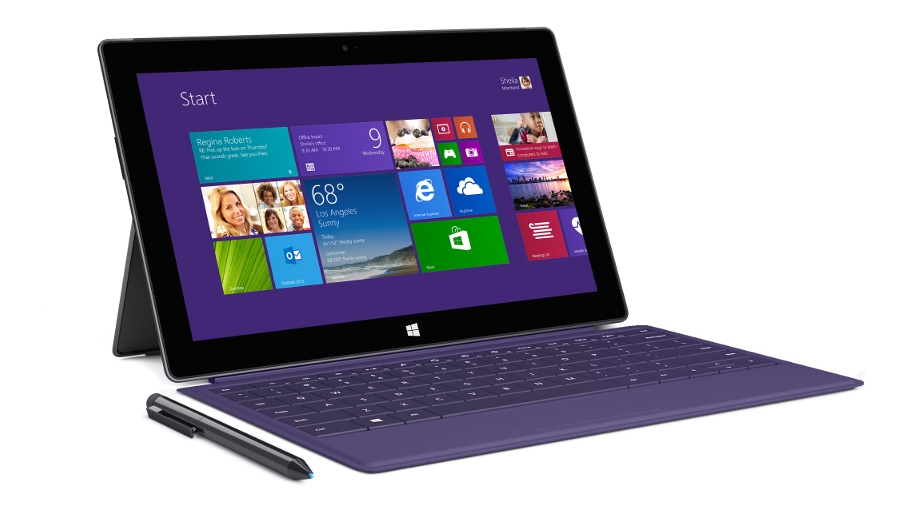Why you can trust TechRadar
Microsoft has taken the option of improving upon on what was there before with the Surface Pro 2, so if you wasn't keen on the concept of a tablet offering the functionality of a laptop, you're unlikely to be swayed by this second effort. On the other hand, fans of the Surface Pro will like the Surface Pro 2 even more for its practical improvements.
We liked
One of the main plus points of the Surface Pro 2 over the Surface 2 is that it can simply do more thanks to increased battery life, RAM, storage and improved graphics. The inclusion of Intel's Haswell CPU may not give it a noticeable performance boost, but it does give it the legs to go for a few more hours that could make the difference when you're finishing off that all important document or gaming session on the way home.
The Surface Pro 2's display may not have received an upgrade, but then it didn't need one. It's still a fine IPS panel that helps bring Windows 8.1's colorful and vibrant nature to life. The tablet itself is easier to use thanks to improved keyboard covers - even the Touch Cover 2 will prove more than adequate for most this time around.
The Wacom pen is once again excellent and once extends beyond being a mere novelty, and we're pleased to see that Microsoft has given it a magnetic connector so that you can attach it to the side of the device when not in use.
We disliked
If just one change is made to the Surface Pro 3 should it, er, surface, we want it to be slimmer. The Surface Pro 2 is undoubtedly more portable than an Ultrabook, but it's still heavier and bulkier than rival tablets. If Microsoft can slim it down by the same amount that it has the Surface 2, we'll be whipping out our credit cards before you can say "VaporMG".
The Surface Pro 2 may benefit from Intel's Haswell processor, but we would still like to see a model with dedicated GPU, rather than shared. It may require something of an engineering feet from Microsoft, but we're allowed to dream.
It may not be a fault of the Surface Pro 2 itself, but Windows 8.1's persistent scaling issues on the desktop put something of a damper on the whole experience, leaving you with tiny fuzz text that - for now - has us avoiding certain apps until they get an update.
Sign up to the TechRadar Pro newsletter to get all the top news, opinion, features and guidance your business needs to succeed!
Final verdict
The Microsoft Surface Pro 2 still straddles the middle ground between laptop and tablet, but a lack of identity doesn't mean that it should be shunned - far from it. The traditional lines between device form factors are increasingly blurred, and those seeking a fresh form factor that offers real productivity gains (in addition to on-hand entertainment) will find lots to love with the Surface Pro 2.
That said, it's an incremental upgrade from the Surface Pro, so if you didn't fancy what it had to offer the first around, there isn't anything drastically new that will have you reaching for the Surface Pro 2 this time.
It's also a machine for anyone rooted firmly in the Windows camp. The traditional desktop mode allows you to install anything from browser extensions to full-fat applications and more, and its value increases further still if you think of Microsoft's Windows Store as a growing ecosystem that will offer an increasing number of quality apps over time.
Starting at £719 ($1,162, or AU$1,212) without a keyboard, however, it's worth thinking twice about picking up a Surface Pro 2 if there are specific aspects of a similarly priced laptop or tablet that you know you would benefit from.
If you're a mobile worker in need of a lightweight tablet that's brimming with apps, for example, or a professional in need of a powerhouse laptop with a quad-HD display, there are better options than the Surface Pro 2 out there. The Surface Pro 3 is the obvious choice - it's lighter, thinner and comes with a dazzling display, in addition to a host of improved accessories - such as the new Type Cover and Surface Pen developed by N-Trig.

